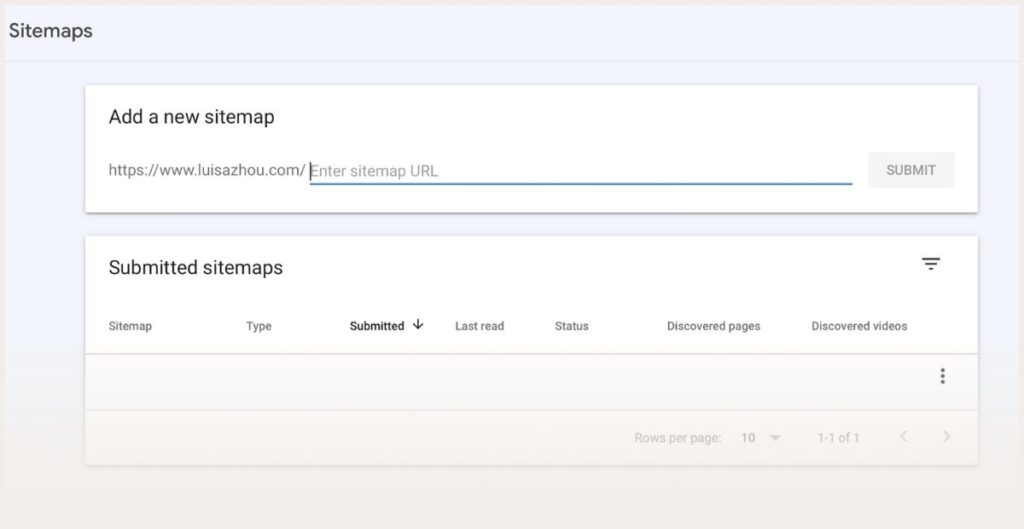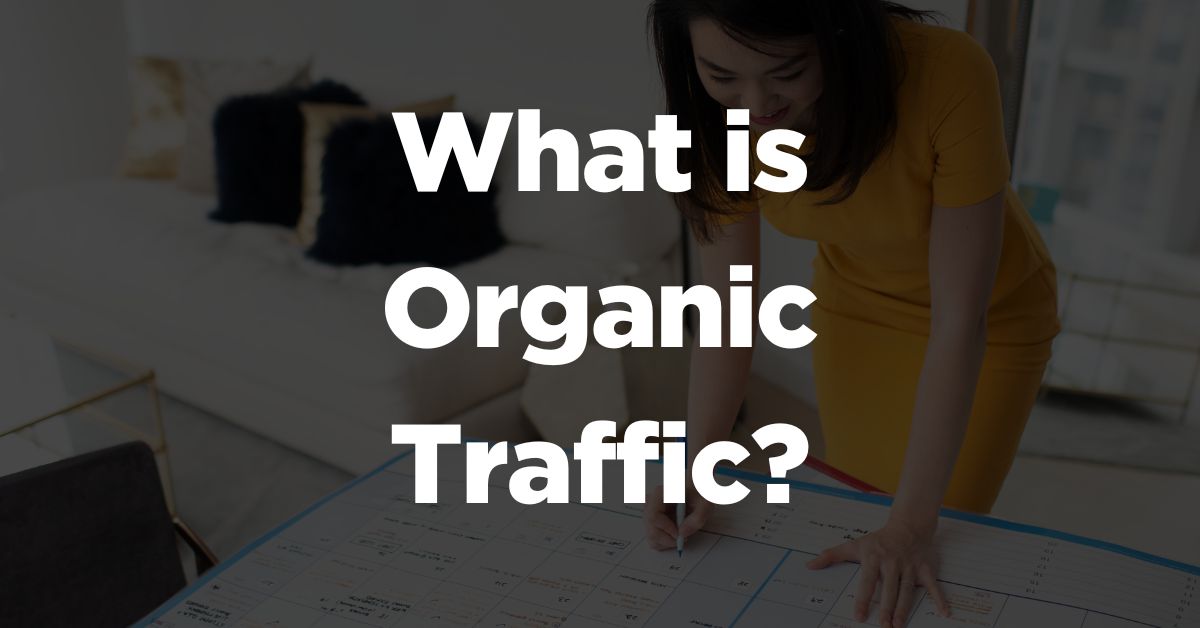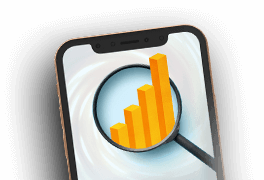What is organic traffic? This guide is for you.
You’ll learn:
- What organic traffic is
- How to use it to get more leads and sales
- The reason organic traffic is better than paid traffic
- And more!
Read on to learn more.
We’ll cover:
- What is organic traffic?
- Why is organic traffic important?
- Should you grow organic or paid traffic?
- How do you get more organic traffic?
- How do you track organic traffic?
What is organic traffic?
Organic traffic is unpaid website traffic from search engines.
To get more organic traffic, you need to rank high on sites like Google or Bing. You do this by using search engine optimization (SEO).
Compare organic traffic to paid traffic.
Paid traffic refers to paying for traffic coming through a search engine or social media platform.
Then, you also have direct traffic. The difference between direct and organic traffic is that a website visitor already knows your website URL or brand name and goes directly to it.
Social traffic refers to organic (non-paid) traffic coming from social media platforms.
And finally, referral traffic is when someone clicks on the link to your website from another website or social media platform. Building these links improves your SEO, but we’ll talk about that later.
With all these different kinds of traffic, why is organic traffic so important?
Well…
Why is organic traffic important?
60% of marketers say that SEO is their best source of high-quality leads. Why? Here’s why you need organic traffic for your business.
What are the benefits of organic traffic?
Organic traffic is…
- Scalable: With your content, you can get hundreds, thousands, or even millions of website visits. Those website visits turn into leads and sales. And that compounds over time.
- Sustainable: Your content exists on Google forever (unless you delete the page or change the URL). So you can keep growing organic traffic long-term without constantly pumping out new content.
The 4-Step Automatic Attraction System
for attracting more clients daily... without paid ads, social media, or "hustle"!
- Profitable: 14.6% of leads generated from search engines buy from you. Consider how content you’ve created once can keep bringing in new business and you’ll see how SEO can be highly profitable.
Ultimately, organic traffic can become something of an automatic sales machine if you optimize it.
Are there any downsides? Let’s talk about them.
What are the drawbacks of organic traffic?
Organic traffic is…
- Not for beginners: There are faster ways to get your first clients and make revenue. So it’s not the best idea to focus on building organic traffic as a beginner. Instead, prioritize marketing strategies that will start your business.
- Takes resources to build: Organic traffic is technically free to build – instead, you pay with your time and energy. You don’t need to create that much content to see results. BUT you will see faster results with more content.
- Lacks control: The Google search algorithm isn’t random – but it can feel that way. Google is constantly improving search metrics to deliver the best content. And that means your Google rankings can change – fast. With that, paid traffic can feel more predictable.
So could paid traffic be better than organic traffic? No. And that’s what we’ll look at next.
What is better – organic or paid traffic?
Both organic and paid traffic have their benefits, but here’s the thing:
Paid traffic is better in the short term.
Organic traffic is better in the long term.
If you look at the stats, organic search accounts for around 80% of global search traffic.
Paid traffic accounts for only 15%.
That means organic search has around 20X more traffic opportunity than paid search traffic on both mobile and desktop.
Plus, as you don’t pay for every organic visitor, this traffic source is far more profitable. Paid traffic can only generate so much ROI for you.
It’s not that paid doesn’t work. It does.
But organic traffic is more sustainable and profitable long term.
How do you increase organic traffic?
Now you know what organic traffic is.
Ready to increase organic traffic and grow your business?
There are four main pillars:
- Keyword research
- Content writing
- Link building
- Technical SEO
We’ll discuss each one in detail. However, I want to point out that you don’t need to get all of them perfectly right when you are new.
The first three are the most important. Let’s dive in.
1. Research keywords
Google Keyword Planner is Google’s free keyword tool for researching keywords for Google ads.
But you can use it for building organic traffic too.
Log in, and type in a word that relates to your business. For example, “business coaching.”
Then scroll through the keyword ideas. You’ll see the average monthly searches, which will tell you how popular the keyword is.
That said, don’t always target the most popular keywords. Use a mix of keywords to build your strategy – the less popular keywords are often easier to rank for so you might want to target those first when you’re still building up your SEO.
You can target these keywords with well-written content.
Here’s how.
2. Write content
To build SEO, you have to write content – but not just any content.
Your content needs to be better than the competition.
Ask yourself:
How can your blog posts be more valuable, detailed, or entertaining?
Then, to make your content rank for your target keyword, optimize it for SEO:
- Use the keyword in the title, intro, outro, and body
- Write compelling meta-descriptions
- Change your image alt tags
To learn more about creating content, read this post on SEO tips for service businesses.
3. Build links
The next step in your SEO strategy is to build links.
Links from other websites give your website a “trust score” – Google understands that your website is one that other websites trust.
But not all links are equally valuable.
You want links from high-authority sites. For example, if you’re in the health space, getting a link from Healthline is gold.
So, how do you get these backlinks?
Two ways:
- HARO: Help A Reporter Out (HARO) is a free newsletter that sends journalist requests every day. Respond to relevant requests to get a chance of being featured in a major publication.
- Podcasts: Approach podcast hosts in your niche to interview as a guest. The podcast can then link your website in the show notes.
The 4-Step Automatic Attraction System
for attracting more clients daily... without paid ads, social media, or "hustle"!
4. Check your technical SEO
Working on your technical SEO means improving how your website performs technically.
For example, if your website is slow to load, it could affect your Google ranking.
However, if you’re starting out in business, you don’t need to spend a lot of time on technical SEO. But here are two key things you can do today:
Is your website showing up on Google?
To see if your website is indexed in Google, type this into Google:
“Site:yourdomain.com”
If it’s not showing up in the search engine results pages, you have a technical SEO problem. But don’t worry – it’s typically a quick fix.
Go to Google Search Console and open an account if you don’t have one already. There, upload your sitemap to make sure Google indexes your pages.
To do it, go to “Sitemaps” and insert your sitemap.

If you need to find your sitemap, check this guide.
Does your website have any loading issues?
Use the tool GTMetrix to check if your website has site loading issues.
If it’s very slow, Google won’t send traffic there – or at least not as much as it otherwise would. That’s because slower websites mean bad user experience.
Fortunately, GTMetrix will give you suggestions on how to improve your site speed.
However, to see improvements in your organic traffic, you need to know how to track it.
Here’s how.
How do you track organic traffic?
There are two tools you need to know:
Google Analytics and Google Search Console.
You can easily sign up for both when you launch your website. The tools will guide you on how to do that.
After about a week, both tools will start measuring your web performance.
To use Google Analytics, log in to your account and click on the “Acquisition” tab.
You’ll now see “Traffic acquisition” – click that.
It’ll take you to a page with the chart “Users by Session default channel group over time.”
This chart shows you the amount of organic search traffic you’re getting in the set time period.
Now, let’s look at Google Search Console. This tool mostly measures the keywords and search results that are driving traffic to your website.
Go to your Google Search Console account.
Under the “Performance” tab, click “Search results.”
There you’ll see your total clicks and impressions. “Impressions” shows you the number of times your content was seen but not clicked and “Clicks” show how many people clicked through to your website.
Now you know how to track your traffic.
But what does it look like when a website grows its organic traffic? That’s what we’ll look at next.
Organic traffic case study
Like many new business owners, I started with paid ads. It was quick and effective for driving traffic straight away and growing a multi-seven-figure business.
But when I wanted to scale my business sustainably, I knew I couldn’t rely on ads.
They require a lot of constant optimizations to keep them working.
And, as costs increase, profits suffer.
So I looked into SEO as a sustainable, long-term solution for driving traffic to my website.
And within two years, I made SEO into a multi-six-figure marketing stream.
What’s more, I didn’t scale my SEO at that point. In fact, I only published one to two articles a month.
Now, I have a system where I get traffic, leads, and sales every day. I continue to build my SEO but even if I were to stop doing that, I still have that traffic coming in.
And that’s how powerful SEO can be.
If you want to learn more, take a look at this short video on how I’ve used SEO to grow my business:
The 4-Step Automatic Attraction System
for attracting more clients daily... without paid ads, social media, or "hustle"!
Next steps
So now you know what organic traffic is and the steps to grow it.
If done right, SEO can help you create a sustainable and profitable business. Ultimately, you have a traffic source that delivers automatic sales every month.
How?
Get my 4-step system to help clients find your business – every day.
Read more
The Top Benefits of Blogging for Business








